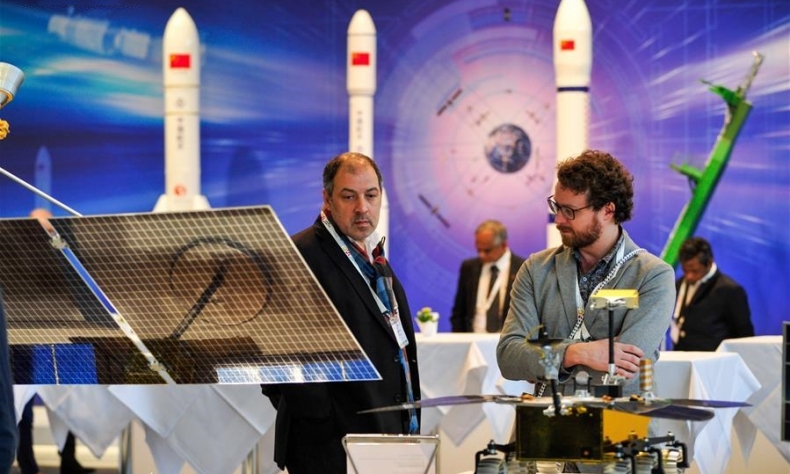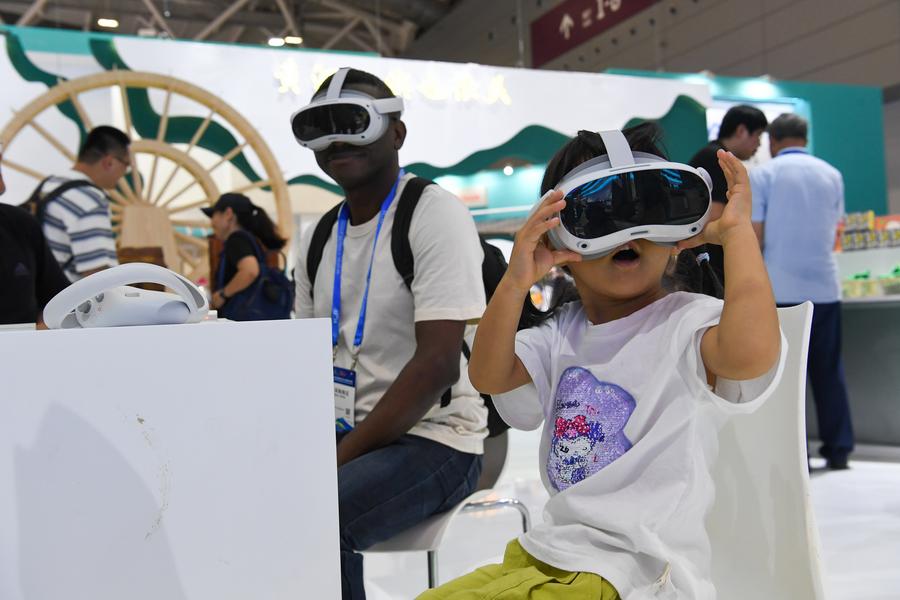Consolidating the Foundation of Public Opinion

Talent exchange and cooperation is facilitating China-EU ties, arguably one of the most important bilateral relationships in the world today.
As the world goes through transformation and turbulence not seen in a century, China and the EU, as two important forces, should maintain their partnership, have more dialogue and cooperation, and deepen strategic communication. They should also enhance strategic mutual trust, build strategic consensus, and carry out strategic collaboration for the stable and healthy development of their relations and make new contributions to global peace and development.
This was Chinese President Xi Jinping’s message when he went to Europe on a state visit in May, covering France, Serbia and Hungary.
As the U.S. adopts a “small yard, high fence” strategy to suppress China’s development in science and technology, talents and other fields, it is strategically important for China to strengthen all-round, multi-level and wide-ranging talent exchanges and cooperation with Europe. It’s also important to consolidate public opinion for the development of bilateral relations.
People-to-people exchanges are a cornerstone of China-EU relations. President Xi has said that China and Europe, “two major forces advocating multipolarity,” should strengthen people-to-people and cultural exchanges for better communication. China and Europe have carried out multi-level cultural exchanges, cooperating in education, culture, sports, youth issues, and science and technology. To promote people-to-people exchanges, China has implemented a pilot visa-free policy for France, Germany, Switzerland and some other European countries, which will be in effect till 2025.
Since 2018, the number of Chinese citizens with EU residence permits has remained around one million every year. The Chinese are among the biggest foreign resident populations in the EU. In education, China has agreements with more than 20 EU member states on the mutual recognition of degrees, academic qualifications and diplomas. Europe has opened cultural and educational institutions in China such as the Alliance Française, Goethe-Institut, and the Instituto Cervantes while there are over 200 Confucius Institutes and Confucius Classrooms in Europe. In the cultural field, there is a variety of exchange projects, and exchange centers have been set up by both sides to consolidate public opinion, which has become a model for cross-cultural exchange and mutual learning.
During his May visit to France, President Xi and French President Emmanuel Macron jointly spoke to reporters after their talks at the Elysee Palace. Xi said 2024, which is being celebrated as the China-France Year of Culture and Tourism as a tribute to 60 years of their diplomatic ties, should be utilized to promote cooperation in fields like education, sports, film and television, and youth. He also spoke about the “good stories” in the history of educational exchanges between the two countries.

One is the Foochow Shipbuilding Institution in southeast China. In the 19th century, French naval officers and engineers played a stellar role in its establishment and built China’s base in maritime engineering, navigation and other advanced Western technologies. The Work-Study Movement in France at the beginning of last century is another one. Thousands of progressive young Chinese went to France. They studied French culture and Western science and worked in factories in Paris, Lyon and Montargis to pay for their studies.
Xi also said France will be the “country of honor” at the 2024 China Annual Conference & Expo for International Education to be held in Beijing from October 31 to November 2. And he pledged that the number of French students studying in China will exceed 10,000 in the next three years, and European youth exchanges in China will double.
Along with the development of Sino-European relations, Sino-European talent exchange and cooperation has also blossomed. In 1997, the EU launched the EU-China Higher Education Cooperation Program to promote exchanges between Chinese and European institutions of higher learning and boost European studies and the internationalization of higher education in China. In 1998, China signed the Agreement for Scientific and Technological Cooperation with the European Community, and in 2001, it joined the World Trade Organization. In the era of economic globalization, the demand for China-EU cooperation has increased.
Subsequently, a cooperation framework was established for China-EU talent exchange. In 2003, the EU published Common Interests and Challenges of the EU-China relationship – Towards a Mature Partnership and China issued a policy paper on the EU, which said bilateral partnerships can be promoted through academic cooperation. The two documents marked a new stage in China-EU cooperation in higher education.
In the same year, China promulgated Regulations of the People’s Republic of China on Chinese-Foreign Cooperation in Running Schools, encouraging domestic universities to establish joint academic projects with foreign universities, which created a good policy environment for China-EU higher education cooperation. In 2009, China and the EU signed the China-EU Science and Technology Partnership Plan, under which they jointly decide, select and fund research projects in priority areas.
In 2010, the Europe-China Clean Energy Center was launched, and multiple platforms for cooperation between Chinese and European researchers were established. They include the Platform for European Researchers’ Networks in China and the EURAXESS-China office, which links Chinese and European researchers. In 2011, Beijing Normal University became the first Chinese partner institution to join the EU’s Erasmus Mundus Joint Master’s training program – Research and Innovation in Higher Education.

Since 2010, China-EU talent cooperation has deepened. In 2012, at the 15th China-EU Summit, China and the EU issued a joint statement on innovative cooperation dialogue. Based on this, the first China-EU Innovation Cooperation Dialogue was held in 2013, and they reached a consensus on strengthening scientific research and innovation. In 2013, at the 16th China-EU Summit, the China-EU 2020 Strategic Agenda for Cooperation was formulated.
During the 17th China-EU Summit in 2015, a co-funding mechanism for research and innovation was established. It greatly increased the proportion of Chinese researchers in the EU Framework Program for Research and Innovation as project hosts and transformed China’s participation from scattered application to centralized application in the National Science and Technology Information System, making the sci-tech cooperation systematic and standardized.
Since 2020, although the talent cooperation was affected by the COVID-19 pandemic, it has developed new forms and fields. At their third plenary session in July 2024, the 20th Central Committee of the Communist Party of China emphasized the need to expand international sci-tech exchange and cooperation, encourage the establishment of international sci-tech organizations in China, and optimize the management mechanism for international exchange and cooperation among universities, science research institutions and societies. At the 2023 China-Europe Talent Forum, the Adecco Group, a Zurich-based HR company, and Peking University signed an agreement for in-depth cooperation and exchange in talent training, employment and other aspects, and improve the global career development capabilities of top-notch talents.
In May 2024, the China-Europe Talent Exchange and Innovation Cooperation Center was inaugurated in Hangzhou, Zhejiang Province in east China. A platform for talent exchange and innovation cooperation with Europe, it is following a one-center, multi-base model to pool domestic and overseas forces for open cooperation between China and Europe in science and technology, culture, innovation and entrepreneurship.
 Facebook
Facebook
 Twitter
Twitter
 Linkedin
Linkedin
 Google +
Google +










